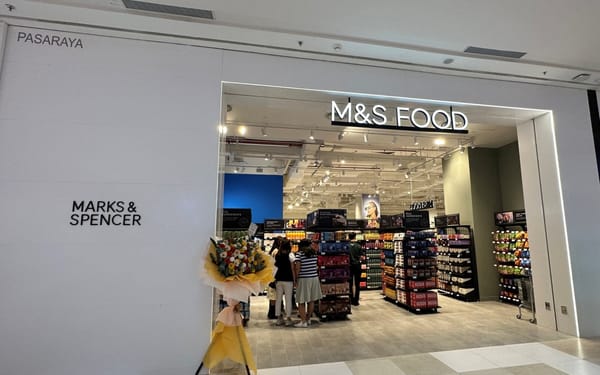Understanding the Evolving Threat Landscape Following a Data Breach

The recent breach your company has experienced is a stark reminder of the increasingly complex and aggressive nature of serious and organised crime in the digital age. As highlighted in Europol's European Union Serious and Organised Crime Threat Assessment (EU-SOCTA) 2025, the very "DNA of serious and organised crime" is changing rapidly, and the online domain has become a central pillar for a vast array of illicit activities. This article will delve into the broader context of this evolving threat landscape, drawing insights from the EU-SOCTA 2025 to help understand the potential implications of this breach and inform future security strategies.
The Internet: A Hub for Modern Criminal Enterprises
The EU-SOCTA 2025 underscores that nearly all forms of serious and organised crime now have a digital footprint. From cyber fraud and ransomware attacks to data theft and even the facilitation of drug trafficking and money laundering, the internet is no longer just a tool but a fundamental component of criminal operations. Your company's breach, therefore, is likely not an isolated incident but rather a manifestation of this broader trend where digital infrastructure and the data it holds are prime targets for criminal activity.
Data as the New Currency of Power
The report explicitly states that "data is the new currency of power; stolen, traded and exploited by criminal actors". The information compromised in your breach holds significant value in the criminal underworld. This stolen data can be used for a multitude of malicious purposes, including:
- Further Cyber-attacks: Stolen credentials can provide access to other systems and networks, potentially leading to further breaches.
- Online Fraud Schemes: Personal and financial data can be exploited for various fraud schemes targeting individuals, businesses, or public institutions. The EU-SOCTA notes a "widespread fraud epidemic" driven by automation and AI, with stolen data being a key enabler.
- Extortion: Sensitive information can be used for extortion, with criminals threatening to release it publicly unless a ransom is paid.
- Identity Theft and Fraud: Compromised personal data is crucial for identity theft and the creation of fraudulent identities, which can then be used in various other criminal activities.
- Sale on Criminal Marketplaces: Stolen data is a highly sought-after commodity on dark web market forums, where it is traded and sold to other criminal actors.
The EU-SOCTA also warns that stolen data is not always used immediately or just once, with criminals often exploiting it within a few years and targeting victims repeatedly. This highlights the long-term risks associated with a data breach.
Evolving Tactics of Cybercriminals
The methods used by cybercriminals are constantly evolving and becoming more sophisticated. The EU-SOCTA identifies several key tactics:
- Exploitation of Vulnerabilities: Criminal actors actively seek and exploit vulnerabilities in digital infrastructures, including zero-day vulnerabilities (unknown to vendors) and Common Vulnerability Exposures (CVEs).
- Supply Chain Attacks: The increasing reliance on digital service providers makes companies vulnerable to supply chain attacks, where a breach of a trusted third party can compromise the victim's systems.
- Social Engineering and Phishing: These methods remain prevalent for gaining initial access to systems and stealing login credentials. The report mentions the availability of phishing-as-a-service on the dark web, making these attacks easier to execute.
- Ransomware: While not explicitly mentioned as the cause of your breach, the EU-SOCTA extensively covers ransomware as a prominent threat. Attackers encrypt data and demand payment for its release, often employing "triple extortion" tactics that include data leakage and DDoS attacks.
The Potential Intersection with Hybrid Threats
The EU-SOCTA also raises a significant concern about the increasing destabilisation through collaboration between criminal networks and hybrid threat actors. While the primary motivation of criminal networks is typically financial gain, they can become "proxies for hybrid threat actors", who may have political or destabilising objectives. Cyber-attacks, including data breaches, can be carried out in service of these external threat actors, who might be state-aligned and ideologically motivated. This blurring of lines makes attribution more challenging and underscores the complex motivations behind cyber incidents.
Responding and Building Resilience
In the aftermath of a data breach, the EU-SOCTA's insights underscore the critical need for a dynamic and proactive response. As Catherine De Bolle, Executive Director of Europol, states, "The growing intersection of cutting-edge technology and organised crime demands a proactive response to effectively address the evolving threats posed by these advancements". This includes:
- Thorough Investigation: Understanding the scope and nature of the breach is paramount.
- Victim Support: Prioritising the protection and needs of affected individuals is crucial.
- Strengthening Security Measures: Implementing robust safeguards and updating security systems to address identified vulnerabilities is essential. The EU-SOCTA emphasizes the need for constant updates in security systems.
- Enhanced Cooperation: Sharing information with law enforcement agencies and relevant partners can contribute to a broader understanding of the threat and potentially aid in identifying the perpetrators. Europol plays a "central role in providing national law enforcement agencies and partners with critical intelligence on current and emerging threats".
- Continuous Innovation and Adaptation: The threat landscape is constantly evolving, requiring an ongoing commitment to innovation in security practices and technologies.
The EU-SOCTA 2025 serves as a stark warning and a call to action. Your company's experience highlights the reality of these evolving threats. By understanding the broader context outlined in this report, you can better navigate the aftermath of this breach and build a more resilient security posture for the future. Addressing this evolving threat landscape demands continuous innovation, enhanced collaboration, and long-term engagement.





